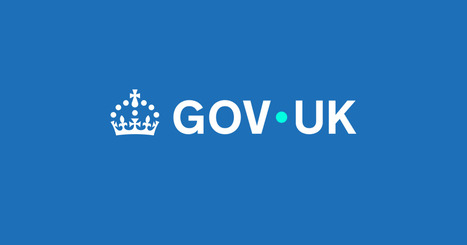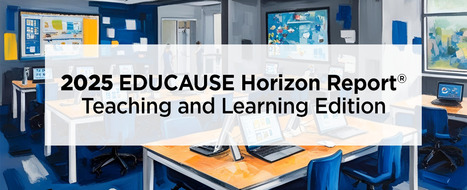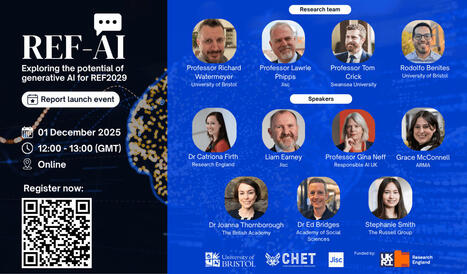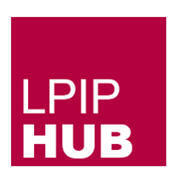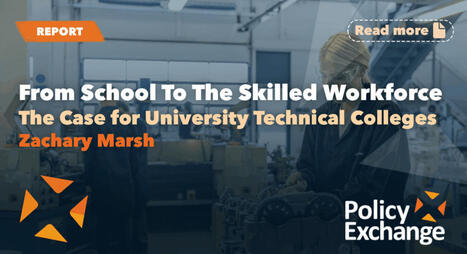 Your new post is loading...
 Your new post is loading...

|
Scooped by
heather dawson
December 23, 2025 8:20 AM
|
A scholar led open access publishing collective

|
Scooped by
heather dawson
December 18, 2025 3:15 AM
|
Grant funding for international placements and partnership projects for organisations working in education, training, youth and sport.

|
Scooped by
heather dawson
December 16, 2025 4:13 AM
|
Suanne Gibson, Francesca Peruzzo and Zeta Williams-Brown argue that the barriers faced by disabled students need to be understood as part of an ecosystem rather than one-off roadblocks Suanne Gibson, Francesca Peruzzo and Zeta Williams-Brown argue that the barriers faced by disabled students need to be understood as part of an ecosystem rather than one-off roadblocks

|
Scooped by
heather dawson
December 11, 2025 3:41 AM
|
Arif Ahmed talks about the importance of academic freedom in the higher education sector as the UK funding bodies take the next step towards REF 2029.

|
Scooped by
heather dawson
December 9, 2025 3:13 AM
|
In Part One of University Lands: Mapping risks and opportunities for the UK HE sector, we explore the state of the UK HE sector’s land.

|
Scooped by
heather dawson
December 4, 2025 3:24 AM
|
New research suggests there is strong backing for a university governance Code that addresses power imbalances and over-financialisation. This is the first of two reports that HEPI is publishing on university governance in the run-up to Christmas. The authors of both reports will feature at a free webinar on governance issues on Thursday, 11 December 2025 from […]

|
Scooped by
heather dawson
December 2, 2025 11:50 AM
|
The 2025 EDUCAUSE Horizon Report profiles key trends and emerging technologies and practices shaping the future of teaching and learning, and envision

|
Scooped by
heather dawson
December 2, 2025 4:46 AM
|
The adoption of generative AI for REF-related work is “relatively shallow and/or patchy” across higher education institutions, according to a report from the University of Bristol’s Centre for Higher Education Transformations and Jisc. The report, funded by Research England, is based on interviews with pro vice chancellors for research and institutional REF leads, as well as a survey of more than 350 university staff. It finds that only a few institutions are in the process of developing AI tools for REF purposes – but there is a “broad consensus” that REF will become increasingly “AI-infused”.

|
Scooped by
heather dawson
November 26, 2025 4:33 AM
|
Poor preservation threatens the scholarly blogging ecosystem. What makes scholarly blogs sustainable and how can these practices be promoted?

|
Scooped by
heather dawson
November 25, 2025 3:52 AM
|
The government should establish a network of university technology-adoption centres as the backbone of an upgraded national tech-diffusion system. This is according to a new publication from the Tony Blair Institute for Global Change, which takes its inspiration from Germany’s Mittelstand-Digital Innovation Hubs and other initiatives around the world – universities would deliver training, help build business networks, and support a “CTO-as-a-service” offer for SMEs.

|
Scooped by
heather dawson
November 13, 2025 5:01 AM
|
This report examines how open science practices contribute to research culture, drawing on a scoping review of academic and grey literature.
Commissioned by Science Europe, this report is the result of a collaboration between the Centre for Science and Technology Studies (CWTS) at Leiden University and the Open and Reproducible Research Group at Know Center GmbH. They explored the contributions and unintended consequences of open science in realising results that align with key research culture values such as equity, openness, integrity, care, collaboration, and autonomy, with the aim of informing future policy and research agendas.
This work forms part of Science Europe's strategic reflections on how open science and research assessment reform are interconnected, and builds on the results of a 2024 survey amongst its membership on the topic.

|
Scooped by
heather dawson
November 11, 2025 3:29 AM
|
Chartered ABS Annual Membership Survey 2025: Financial sustainability becomes the top priority for business schools

|
Scooped by
heather dawson
November 5, 2025 4:10 AM
|
The conclusions and recommendations of the independent review of the curriculum, assessment and qualifications system in England.
|

|
Scooped by
heather dawson
December 18, 2025 3:16 AM
|
Detailed breakdowns of UKRI budget allocations for the financial years 2025 to 2026, 2026 to 2027, 2027 to 2028, 2028 to 2029 and 2029 to 2030.

|
Scooped by
heather dawson
December 17, 2025 3:36 AM
|
The clinical academic workforce has “not kept pace with NHS expansion,” threatening the delivery of the NHS 10-year health plan and other government aspirations, according to a new briefing from the Russell Group. The mission group makes a number of recommendations for strengthening clinical academic careers, including embedding protected research time in clinical roles and targeted regional investment to address the uneven distribution of research activity.

|
Scooped by
heather dawson
December 16, 2025 4:12 AM
|
HESA has published a dashboard showing changes in subject uptake across the UK since 2012–13, with filters showing domicile and level of study. Though based on previously published 2023–24 data, this presentation includes new demographic splits

|
Scooped by
heather dawson
December 11, 2025 3:40 AM
|
UCAS’ end of cycle data for 2025, published today, shows 89,510 UK 18-year-olds who secured a place this autumn said they intended to live at home, compared to 83,705 last year (+7%). These figures, published for the first time by UCAS, mean that 31% of UK 18-year-old accepted applicants indicated...

|
Scooped by
heather dawson
December 8, 2025 3:46 AM
|
Seventeen years after its hopeful launch, Southend’s university campus is closing. Jim Dickinson examines what this tells us about the failure of place-based planning in UK higher education

|
Scooped by
heather dawson
December 3, 2025 3:26 AM
|
Civic 2:0 is a programme to engage national and regional policymakers in the economic and social role higher education institutions play in their towns, cities and regions.

|
Scooped by
heather dawson
December 2, 2025 4:48 AM
|
NCUB’s annual State of the Relationship report is an evidence tool to strengthen collaboration between universities and businesses.

|
Scooped by
heather dawson
December 2, 2025 4:45 AM
|
There is “little robust information” on how financial challenges are affecting universities’ investment decisions, delivery of services and future planning, according to a new report from the Innovation and Research Caucus which aims to shed some light on the matter. Based on interviews with finance directors at 74 English higher education institutions, the report sees 85 per cent of institutions reporting an operating deficit or reduced surplus, with wide variety in both the principal causes of deficits and the institutional responses....

|
Scooped by
heather dawson
November 26, 2025 3:18 AM
|
The essential resource for understanding graduate destinations, with findings from the UK's largest higher education survey, insights from careers advice experts and detailed subject overviews.

|
Scooped by
heather dawson
November 25, 2025 3:51 AM
|
This document sets out the broad framework within which UK Research and Innovation (UKRI) will operate.

|
Scooped by
heather dawson
November 13, 2025 4:29 AM
|
Download Publication Independent Analysis Online Reader This new report by Policy Exchange makes the case that University Technical Colleges (UTCs) can play a vital role in addressing the UK’s profound skills crisis. 27% of all job vacancies are now liked to skills shortages, with skills gaps set to cost up to £120 billion annually by the end of the decade. The report argues that UTCs have made significant progress in […]

|
Scooped by
heather dawson
November 6, 2025 3:28 AM
|
Skills England Applies to England Foreword In a time of rapid technological change and shifting economic priorities, it’s vital to equip our workforce with the right skills. The Assessment of priority skills to 2030 report offers a detailed analysis of future employment needs across ten critical...
|
 Your new post is loading...
Your new post is loading...
 Your new post is loading...
Your new post is loading...





